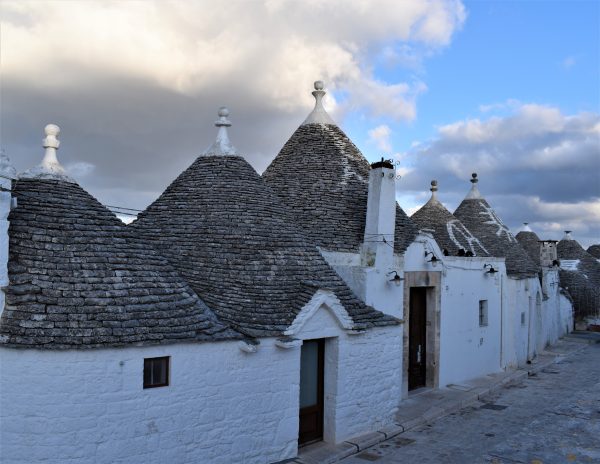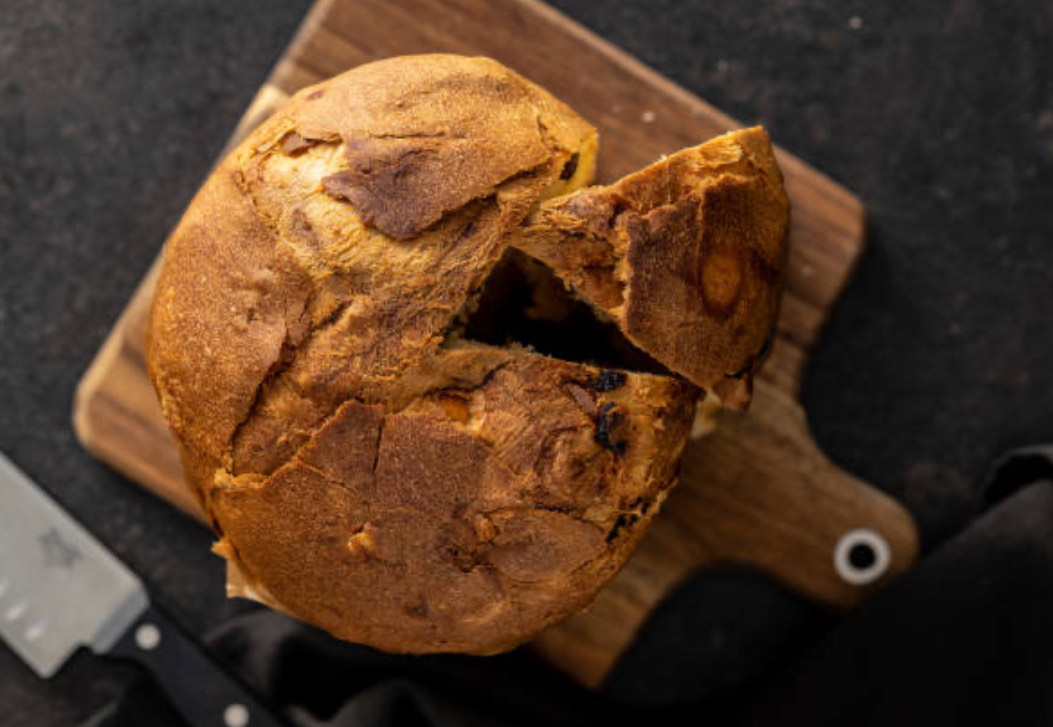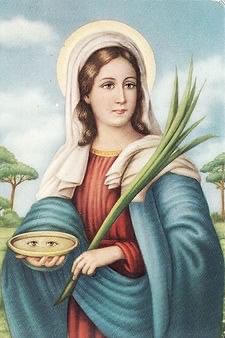In the south of Italy, in what is considered the heel of the boot, you will find Puglia. Despite my many travels to the Bel Paese, this was a region, a treasure, that I had yet to discover. The gleam of this southern gem however was recently revealed to me in the most extraordinary week abroad.
Puglia is often referred to as the land of marvels and after having seen its characteristic whitewashed hill towns, acres and acres of olive groves and massive stretch of Mediterranean coastline, I completely conquer with that descriptor. My inaugural visit, while brief, was unforgettable. Its magnificence has certainly left an indelible mark on my soul.
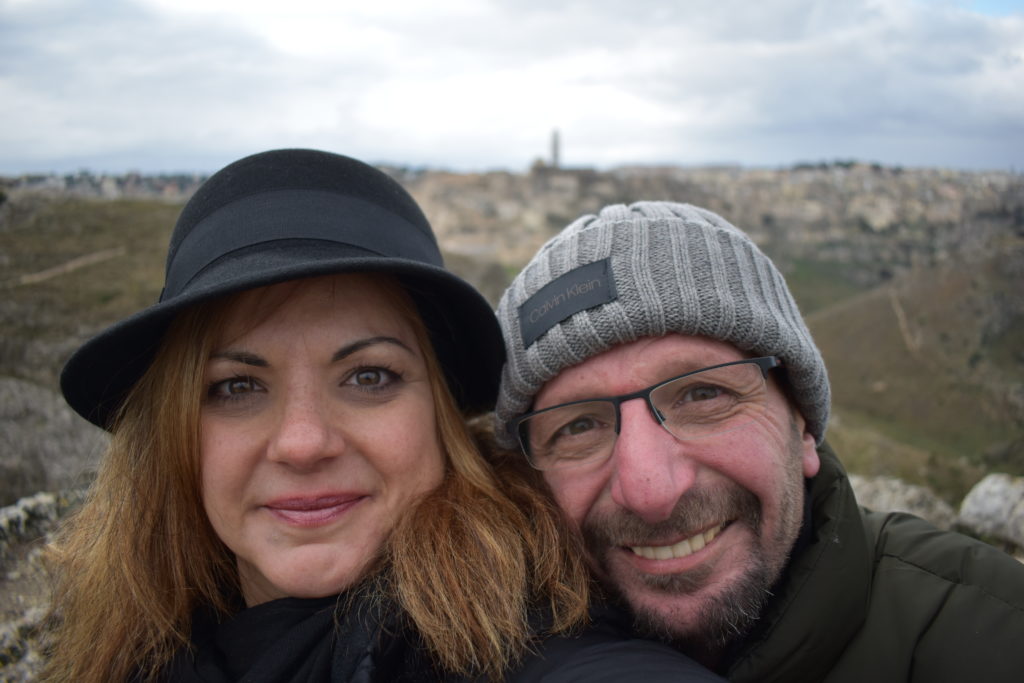
Before I proceed to try and encapsulate this journey into words, I must preface it by saying that I was only able to see and do as much as I did, in the short time I was there, thanks to a native son of this marvelous land. I was able to have a truly immersive experience because I had a local as my guide (my boyfriend Vito), someone who knew all the ins and outs of the countryside. This was in fact the first journey I’ve ever embarked on where I did not pre-plan or research because of the implicit trust I had in the direction I would be taken by Vito. This trip was a formidable mix of leisure and liveliness, I spent just as many moments breaking bread and sharing stories around a family table as I did hiking hilltops and pedaling the cobblestone.
In our Fiat 500, with our frequency set on RTL 102.5 we toured a good part of the countryside. Here is the agenda from my Puglian adventure:
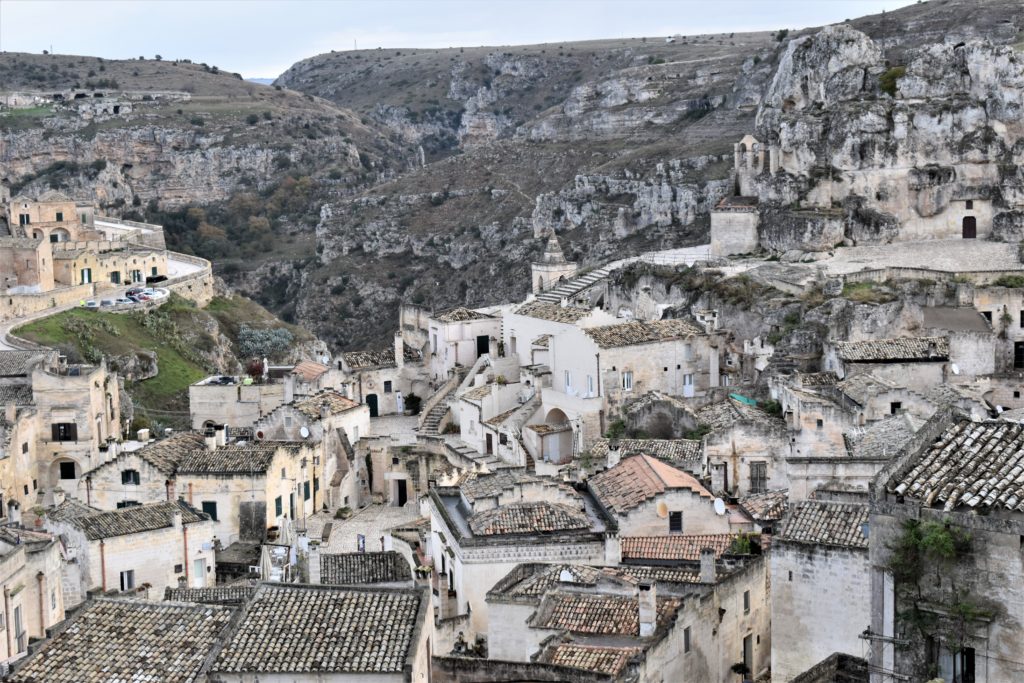
Matera
Ok technically not in Puglia, we crossed over into Basilicata, but given its proximity, it is a must-see. This town lies in a small canyon carved out by the Gravina River and is known as “la città sotterranea” the underground city. It is famed for the “Sassi” which are chalky white, ancient cave dwellings dug into calcareous rock; they are thought to be the first human settlements in Italy (dating back to the Paleolithic Era). This was at one time an area of extreme poverty but was cleaned up and developed by the Italian government, turning it not only into a picturesque tourist attraction but a UNESCO World Heritage Site. Matera was also designated a European Capital of Culture for 2019 by the European Union.
The ancient, primeval look of Matera can be seen in many a motion picture including “The Passion of the Christ” in 2004, “Wonder Woman” in 2017 and the soon to be released James Bond film “No Time to Die”.

Winding roads and steps upon steps are characteristic of this historic centre giving visitors several striking vantage points from which to see the two ancient Sassi -Sassi Barisano and Sassi Caveoso. In addition to this, you can take a short drive (as we did) to the Parco della Murgia Materana (Park of the Rupestrian Churches) which is also a UNESCO World Heritage Site. This archaeological park houses over 150 cave churches and offers the most breathtaking view of the celebrated Sassi. It is also here where you understand why Matera was also given the additional nickname of “the second Bethlehem” (I swear I was prepared for a Jesus siting while we hiked the steep banks of the ravine).
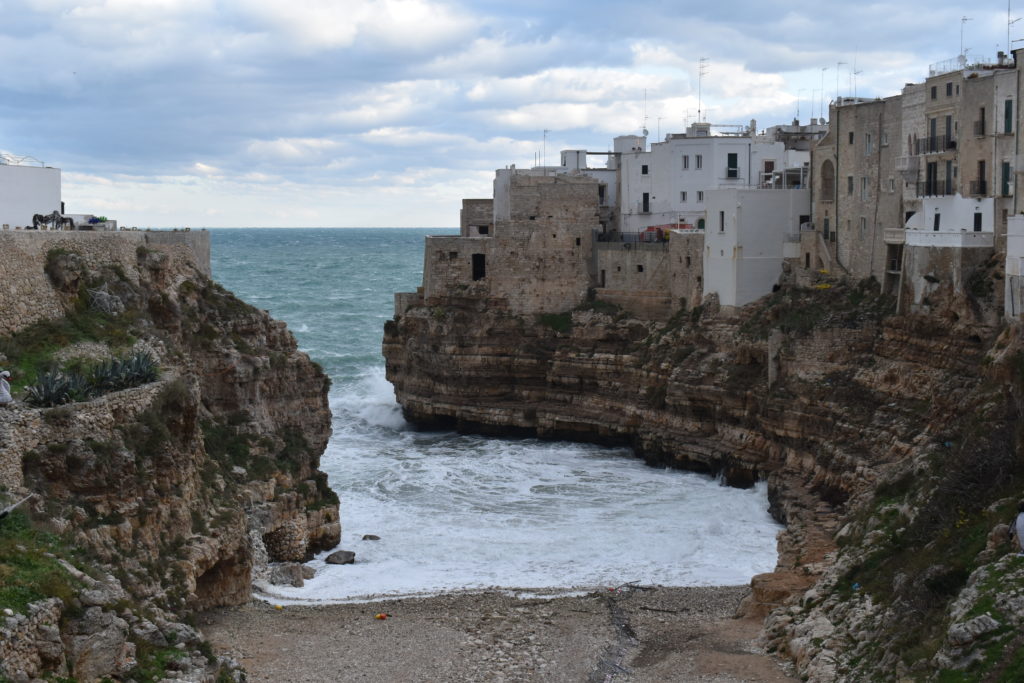
Polignano a Mare
Ok, back to Puglia now and the stunning seaside town of Polignano a Mare (Polignano by the Sea), an incredibly scenic town atop a limestone cliff, suspended above the Adriatic Sea. Because I was visiting during the month of December I could not bask in the glow of the Mediterranean sun casting its reflection from the crystal clear waters of the beaches wedged between rugged cliffs; nor could I partake in the popular activity of cliff diving (ok who am I kidding, even if it was a blazing hot August day I still wouldn’t be jumping off the cliff). I did however get to take in the spectacle of an angry sea, majestic as its waves crashed against the shore from Polignano’s panoramic terraces. In addition, this striking town was further romanticized for me by the glow of Christmas lights. Upon seeing this, I couldn’t help but hum to myself “Meraviglioso” by Domenico Modugno. The acclaimed singer/songwriter was born in Polignano and is honored with a bronze statue facing and embracing his birth town.

Due to its positioning, Polignano is also defined by caves and caverns, in fact, there is also restaurant set inside a seafront limestone grotto called Grotta Palazzese that provides a truly memorable dining experience (I’ll have to go back in summer to experience this for myself). I did however partake in an incredible seafood dinner in a restaurant overlooking the sea.

Ostuni
Ostuni too is situated on a hilltop offering up spectacular coastal views. It is known as “La Citta Bianca” (the white city) very much resembling towns in Greece. Its name in fact is derived from the Greek Astu neon meaning “new town” for it was rebuilt by the Greeks after being destroyed by Hannibal during the Punic Wars. Every pop of color like the green and burgundy of fichi d’india (prickly pear cacti) springing up from their planters or the florals and vines that creep across the various quartieri (quarters) make a bold statement against the whitewashed walls and monuments.

Its winding streets create a maze of discoveries like the fantastic ceramic shops where you can purchase the colorful portafortuna (lucky charm) known as the Pomo of Puglia. It is an acorn like sculpture that is the representation of a flower bud surrounded by young leaves symbolizing spring and the rebirth of nature (guess what I brough back as souvenirs for family and friends). It is also along these streets where you can enjoy un caffe’ all’aperto (an espresso in the open air, yes even in winter) and people watch for a while.
Our next four destinations (Locorotondo, Martina Franca, Alberobello and Castellana Grotte) are all found in the Valle D’Itria which is a rustic valley of olive trees, vineyards and hill towns.
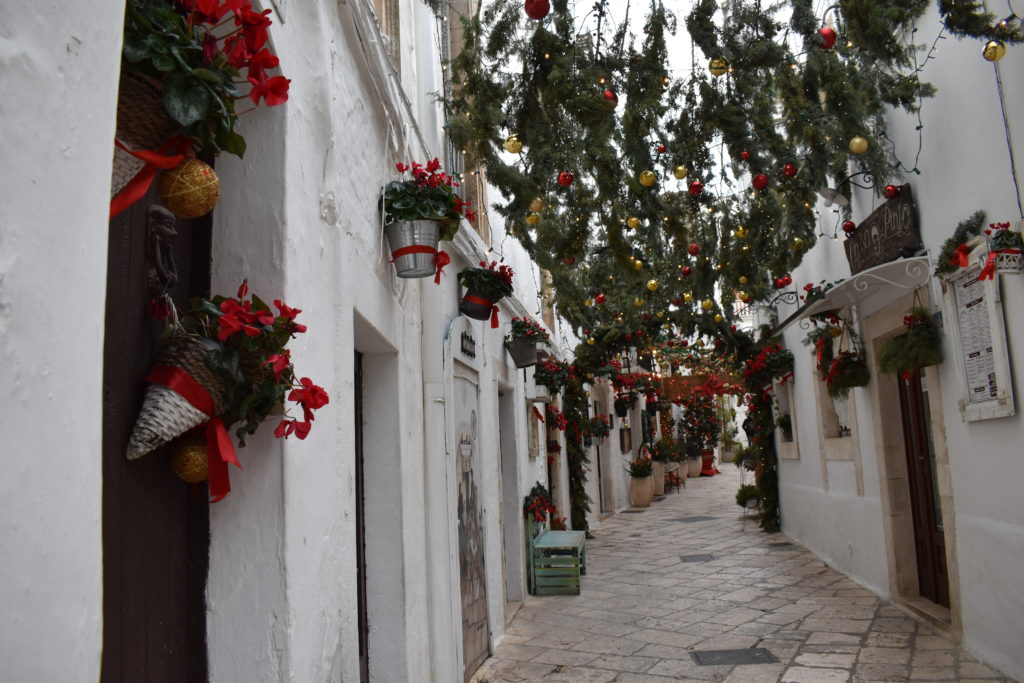
Locorotondo
Here is where I must add an addendum to my earlier statement about not having an itinerary for this this trip. Locorotondo is the only town that I requested we see. This village whose name comes from the circular shape it was built in (Locorotondo actually means round place), is magical during the Christmas season. Having seen photos of this luminous town and being a hopeless holiday romantic, I was adamant about seeing the spectacle first-hand. I delighted in the sheer magnificence of what I now call Christmas Town; its narrow alleys draped in garlands bows and lights is absolutely alluring.
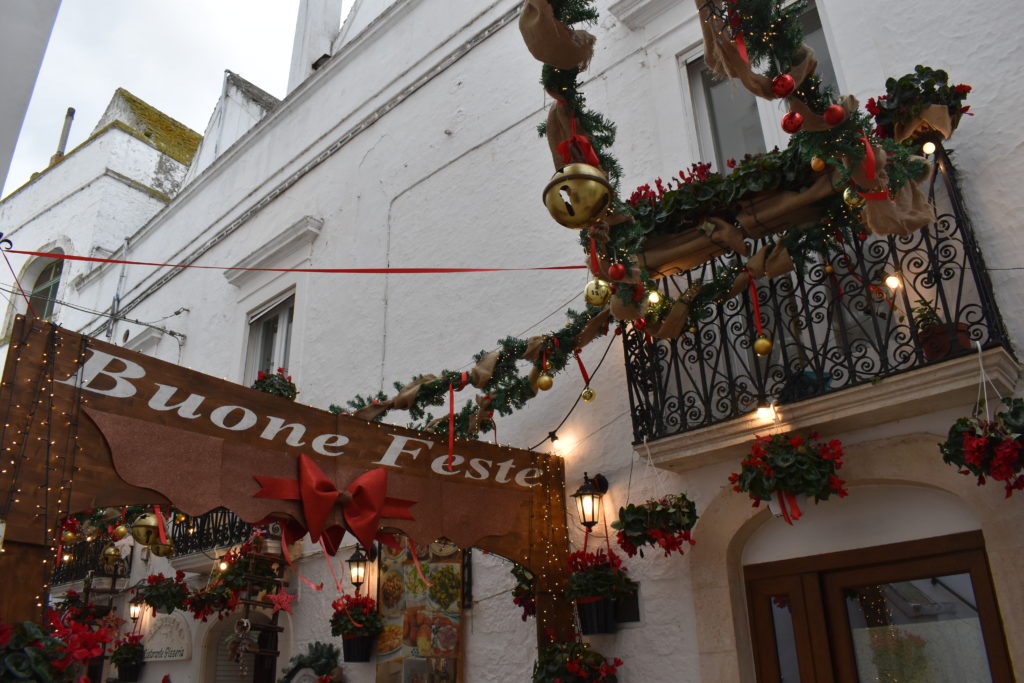
Locorotondo has actually received the accolade of Borghi più belli d’Italia (one of the most beautiful villages in Italy) which becomes immediately evident when strolling through (Christmas season or otherwise). Its calm and simplicity add to its charm and it is the perfect place to enjoy a coffee or a glass of sparkling white wine (for which it is also known) and take in the beauty of everyday life.
This is yet another town perched up in the hills offering captivating views of the surrounding landscape.

Martina Franca
Martina Franca is the largest town in the valley and is punctuated by Renaissance and Baroque gates, the remnants of defense walls and castles. The grandeur and elegance of this historic town are captivating, my shutter lens was going a mile a minute snapping photos of the elaborate porticos and majestic archways.
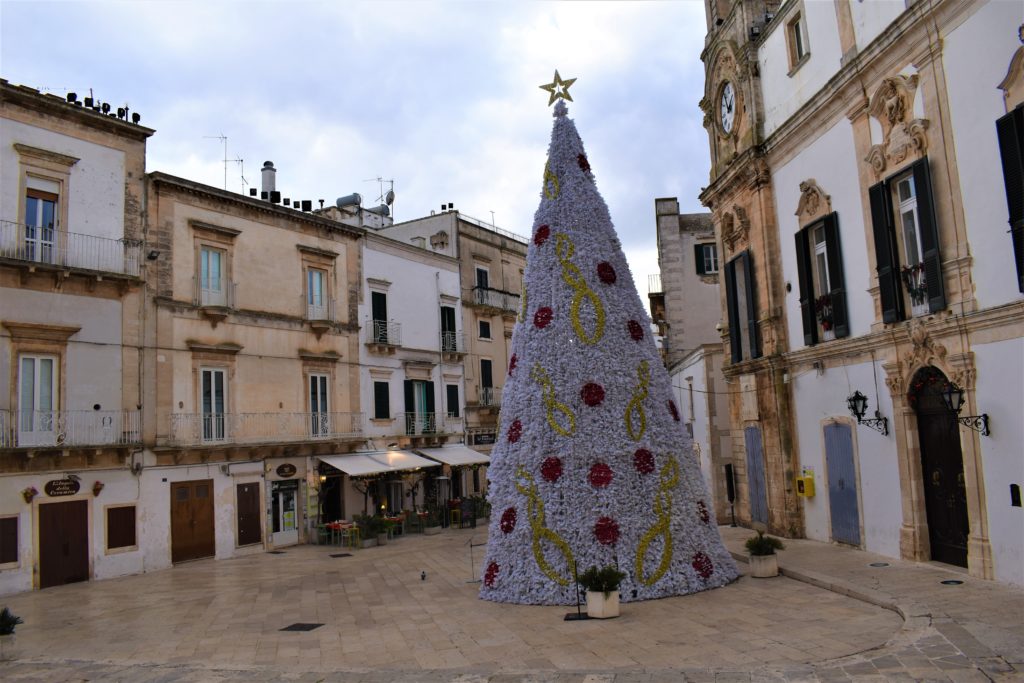
The only thing more wonderful than the architecture in Martina Franca is the capicollo which is a must-try when visiting (and try it we did).
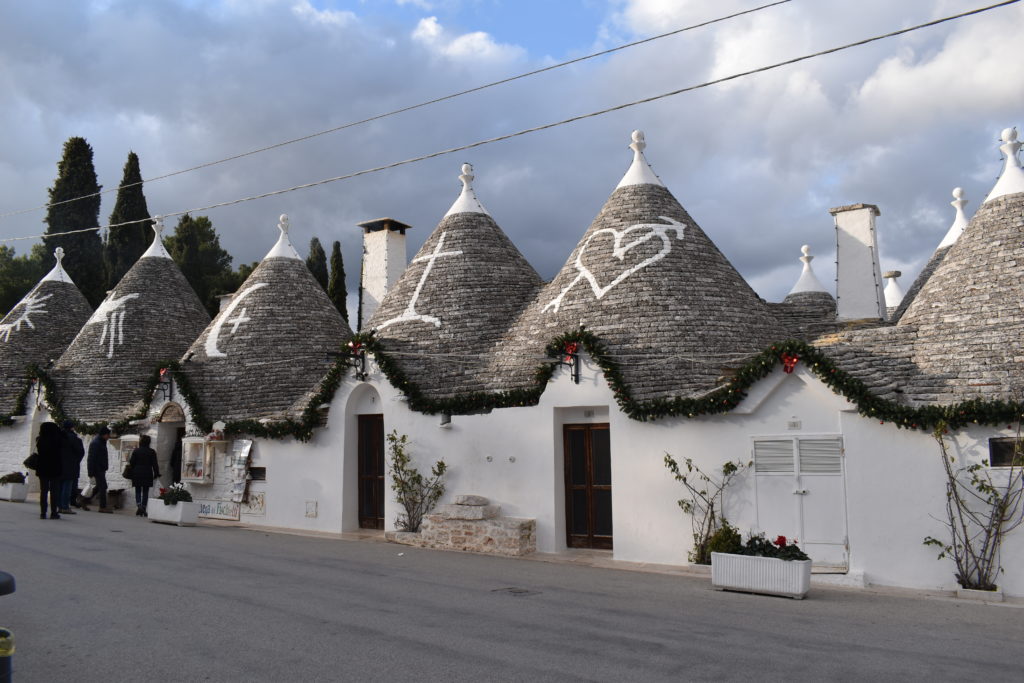
Alberobello
No trip to Puglia is complete without a visit to Alberobello or Trulli town as I’ve named it. Trulli, the conical stone huts found in the greatest concentration here, are quite whimsical. They reminded me very much of Smurf houses (going back to my 80’s childhood here). The Trulli were built on practicality, they were constructed using the stones that peasants cleared from their difficult and rocky fields. They were both easily built and easily knocked down. The technique used to build them is an ancient dry-stone technique where structures are built from stones without the use of cement or mortar for binding.

Alberobello, an entire town of Trulli (1500 of them to be specific) is another UNESCO World Heritage site. This is truly quite something to behold. Some of the cylindrical homes remain inhabited while others are shops, restaurants and even hotels (I’ll definitely be booking one of these beehives on my next trip).
In addition to their iconic shape, the Trulli are also distinguished by the tapering points on the roof called the “Pinnacolo” which is made of hand carved stone. White symbols are also painted onto their conical roofs, many of which are Christian symbols, such as a cross or a heart pierced by an arrow that represents Santa Maria Addolorata (Our Lady of Sorrows). There are also zodiac and planetary symbols as well as the sun and moon.
Castellana Grotte
Castellana Grotte is a medieval town that is home to one of Puglia’s most important attractions, the Grotte Castellane. Discovered in 1938, this is Italy’s longest natural subterranean network of limestone caves.
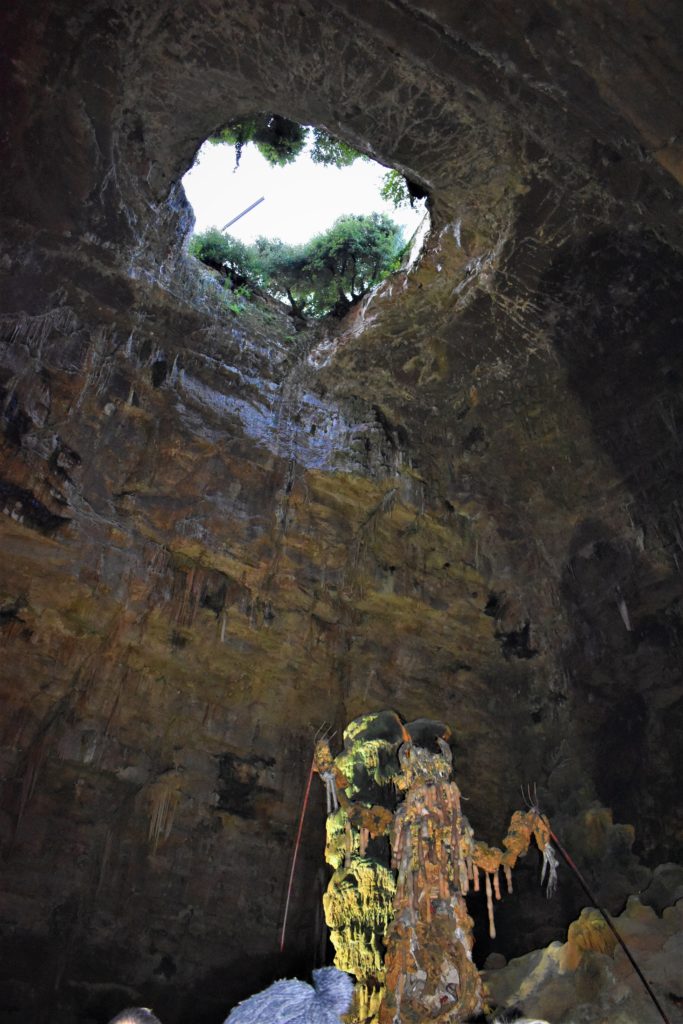
We took the two-hour guided tour through the caves in awe of the scenery made up of stalactites, stalagmites, concretions of incredible shapes, fossils, canyons and caverns which include the Grotta Bianca (White Cave), the Caverna dell’Altare (Cavern of the Altar), the Caverna della Cupola (Cavern of the Cupola), and the Passaggio del Presepio (Nativity Scene Passage), which has a stalagmite shaped like the Virgin Mary called the Madonnina delle Grotte (Little Madonna of the Caves). It was truly remarkable. It is important to note that photography is only permitted in the entrance to the Grotte and it is imperative that you dress comfortably for the walk within the humid underground that spans 3km.
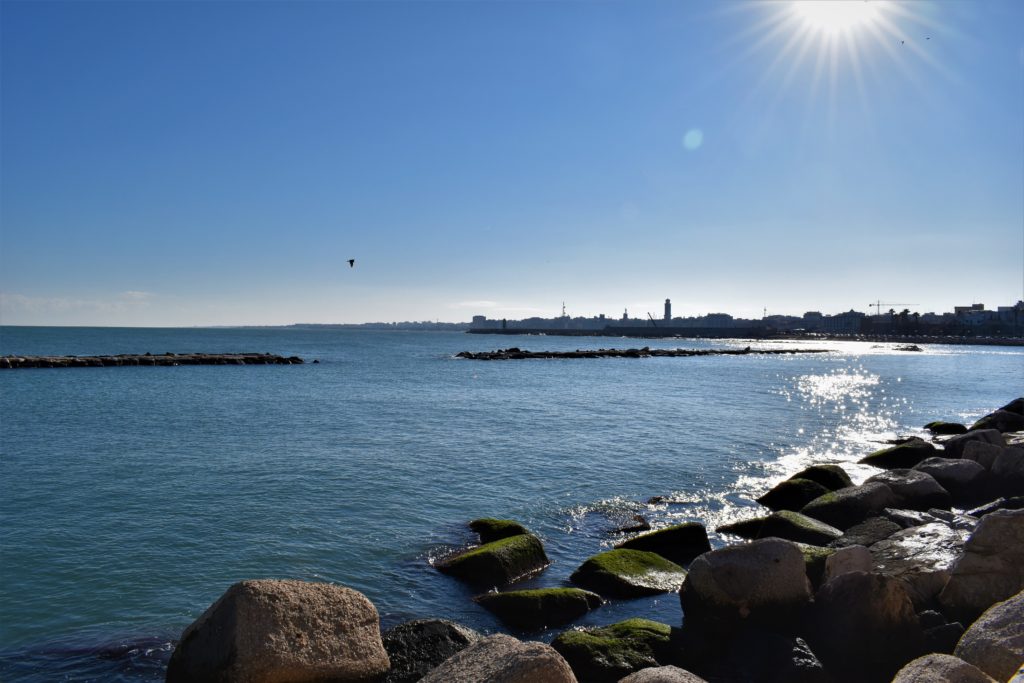
Bari
The capital of Puglia and one of the most important economic centres in southern Italy. It is a port town with a beautiful boardwalk from which you can take in the scenes of fishermen reeling in their fresh catch. Within the capital is the old town of Bari or Bari Vecchia. This is an area that has undergone a major transformation making it definitive point of interest when visiting Puglia.
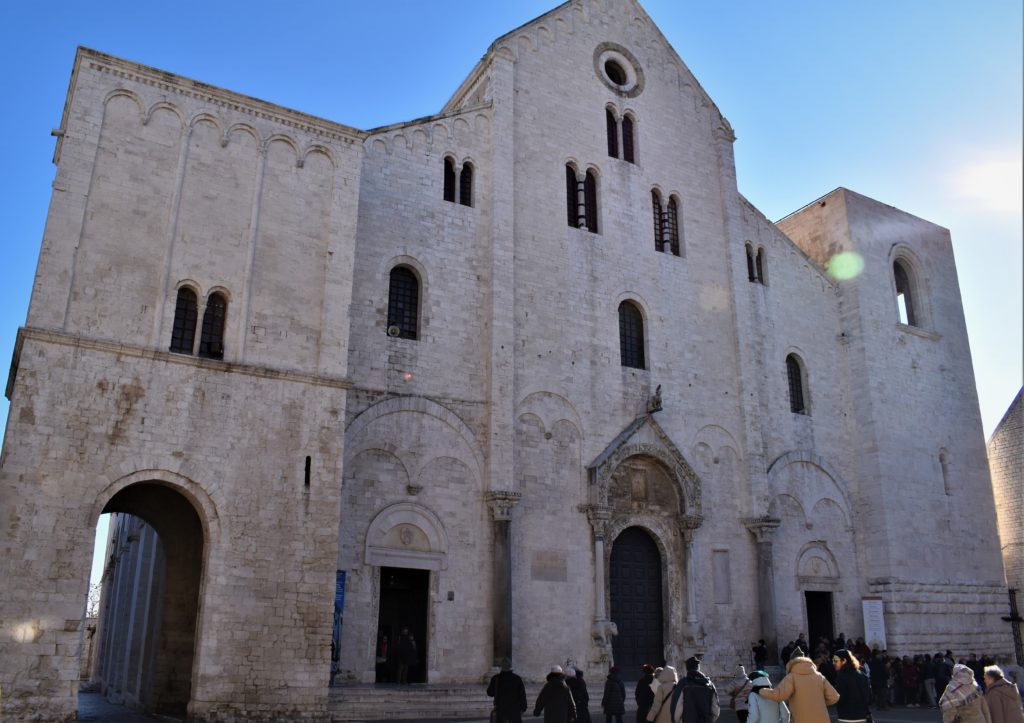
The most notable monument is the Basilica San Nicola which was constructed to house the relics of St. Nicholas. As you can imagine, the appeal of this signature church is magnified during the holiday season. We had the opportunity to see it by night illuminated with phenomenal projections for Christmas. We returned by day to admire its opulent interior of gold ceilings and painted murals as well as visit the tomb of San Nicola.
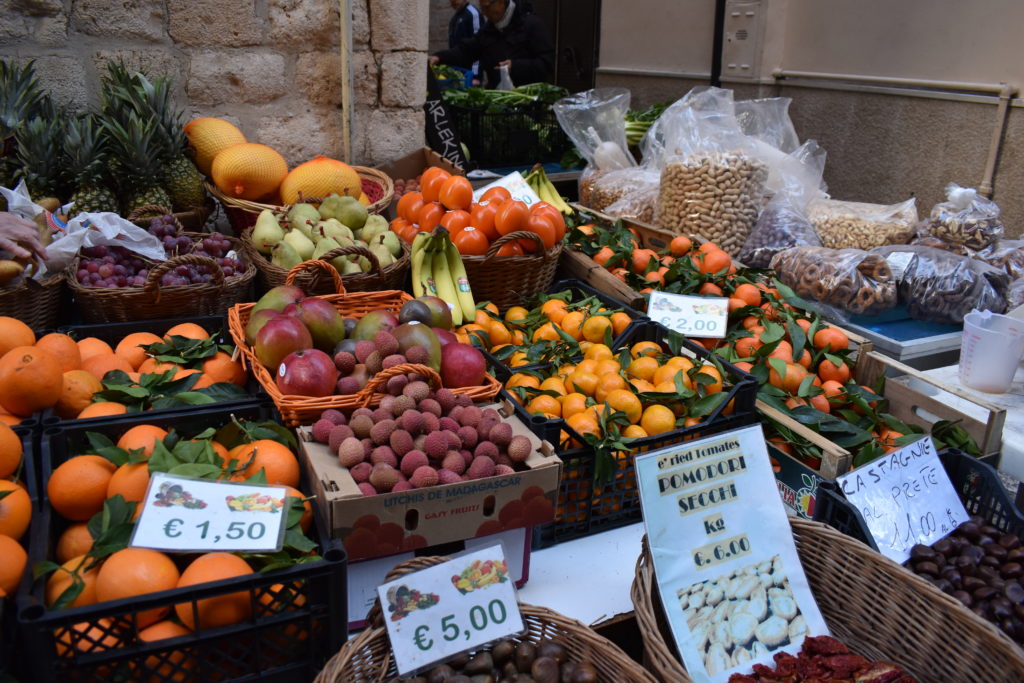
With the pilgrimage portion of the tour complete, it was on to the maze of small, narrow cobbled streets of Bari Vecchia to take in all the sights, sounds, smells and tastes. I loved seeing all the fruits and vegetables for sale in the outdoor stalls along with hearing the sizzle of street food being fried for tourists and locals alike. The city was quite vibrant and alive as many made their final preparations for New Year’s Eve. We were even fortunate enough to witness sound checks taking place as the City prepared to host Capodanno in Musica (think Rockin’ New Year’s Eve but Italian).
Since returning I have gone on to do more research on the wonders of this region. I was fortunate to have seen and experienced a tremendous amount in such a short period and I am determined to return and discover more of its beauty (perhaps in summer next time, I mean who couldn’t benefit from a few days at the beach). This southern region, the heel of Italy’s boot, certainly had me kicking up my heels in joy over its marvels. A presto Puglia!

